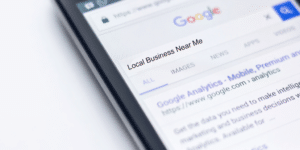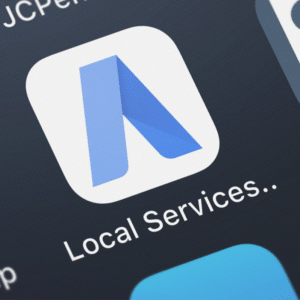
With the right approach, pay-per-click (PPC) ad campaigns are one of the most effective channels for digital marketing. In fact, the largest PPC platform right now, Google Ads, is so popular with marketers that it rakes in more than $100 billion each year. What’s more, returns are so strong that 78% of marketers increased their Google Ads budgets in 2019.
Despite the strong returns on Google Ads, few brands take full advantage of its tools and capabilities. Rather than eye-popping ROIs, their campaigns generate middling returns. This is usually a case of poor optimization. If you skimp on important investments (like keyword research and split-testing) or skip over powerful features (like ad extensions and RLSAs), your campaigns will suffer.
But if you optimize your PPC campaigns using the 7 tips below, you’ll see much stronger returns from Google Ads.
7 Tips for Better PPC Campaigns
1. Keyword Research
Keywords are the foundation of any successful Google Ads campaign. If you target the right keywords, Google will serve your ads to the right users at the right times. That means higher click-through and conversion rates, stronger Quality Scores, and lower Costs per Click.
Unfortunately, many brands fail to invest the kind of time and effort required for effective keyword research. This typically results in a list of broad, generic keywords, which tend to be more expensive, more competitive, and less conversion-friendly.
2. Negative Keywords
One of the best ways to target a broader range of keywords is to use Google Ads’ broad match or phrase match feature. However, these features can result in mismatches. For example, if one of your keywords is “men’s jeans,” broad match could serve your ad to someone searching for “men’s khakis.” That’s not very helpful if you only sell jeans.
To avoid theses mismatches, you can use negative keywords. Google will not serve your ad to searchers whose queries contain these keywords. So if you’re only selling jeans, you can add “khakis” as a negative keyword. This way, your ad will never appear in searches for “khakis.”
3. Location Targeting
If you operate a hair salon in Pittsburgh, you don’t want to serve ads to users searching for “hair salon” from a device in Houston, Salt Lake City, or Portland. In fact, you probably don’t want to serve ads to anyone who’s more than a few miles from your business.
With location targeting, you can narrowly target searchers within a certain radius or a defined geographic area. This way, your local business can serve ads exclusively to local consumers. You can even create different campaigns for different geographic settings.
4. Remarketing Audiences
If you’re not already using remarketing lists for search ads (RLSA), you’re missing out on one of Google Ads most effective features. RLSAs allow you to target visitors who’ve previously visited your site. These users are already more likely to click on your ads and convert. Plus, you’ll be able to tailor a set of ads to this group.
Once you’ve started using RLSAs, you can also take advantage of Google Ads’ similar audiences feature. This feature automatically finds users with similar characteristics and search behaviors to the users on your RLSA lists. This gives you an entirely new group of users to target with similarly strong conversion rates.
5. Ad Extensions
Google Ads aren’t nearly as visible as other ad formats, relying largely on compelling headlines and copy. To make your ads more visible and more compelling, we recommend using ad extensions. Ad extensions allow you to include additional information, which can make your ads more compelling to users. At the same time, they increase the visibility of your ads, giving you a new way to grab users’ attention.
Some of the most popular and effective ad extensions include:
- Call Extensions. Allow mobile users to call your business by pressing a button.
- Callout Extensions. Add short blurbs to your ad, like “free delivery.”
- Location Extensions. Include business information for your local business.
- Message Extensions. Allow mobile users to send text messages to your business.
- Sitelink Extensions. Add links to specific pages on your website.
6. Split-Testing
Split-testing has been a cornerstone of paid search campaigns from the outset. Yet many brands only perform limited A/B testing on their ads. After testing an initial set of ads at the start of a campaign, they fall into a groove. Rather than continually testing and refining ads, they allow them to stagnate.
Today, this kind of approach simply isn’t feasible. Consumer behaviors are evolving at a breakneck pace, and other advertisers are evolving just as quickly. If you’re not continually testing and refining your ads, they’ll fossilize before your eyes.
7. Conversion Tracking
Advertisers are charged for PPC ads on a click by click basis. What’s more, Google determines the cost of each click based on a Quality Score, which is determined by each ad’s click-through rate (CTR). This has made CTR the leading metric for measuring PPC ads and campaigns.
But if you’re measuring PPC campaigns by CTR alone, you’re missing the big picture. The real measure of a campaign’s success is in its conversions.
In Google Ads, you can solve this problem by adding conversion tracking to your campaigns. Conversion tracking uses HTML codes to track which users convert after clicking on PPC ads. It can be integrated with Google Analytics to track conversions through your website, and it allows you to measure important data like cost per conversion, conversion rate, and value per conversion.
Make sure you’re asking your digital marketing partner about these PPC tactics to ensure you’re getting most out of your campaigns. Contact us today to learn more about how we can help you get real results from your Pay Per Click marketing.


